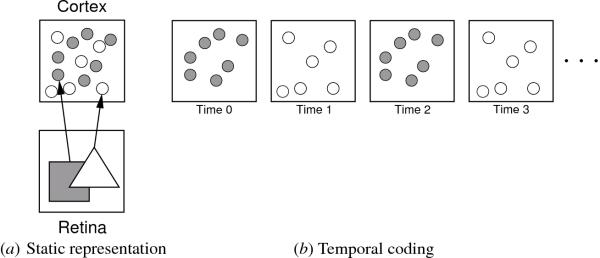
Click on the image to see a PDF version (for zooming in)
Fig. 2.9. Solving the superposition catastrophe through temporal
coding. If firing rates of neurons alone are used to represent
objects, multiple objects in the scene can result in confusion. (a) A
square and a triangle are presented in the retina. In the cortex plot,
the neurons responding to the square are colored gray, and those
responding to the triangle white. When both populations of neurons are
active at once, it is impossible to know which neuron is representing
which object. This problem is known as the superposition catastrophe
(von der Malsburg 1981, 1986a, b). One solution is temporal coding,
where temporal information is used to separate the two
populations. Neurons representing one object activate at one time
step, and neurons representing the other object activate at the next
time step, as shown in (b).
|